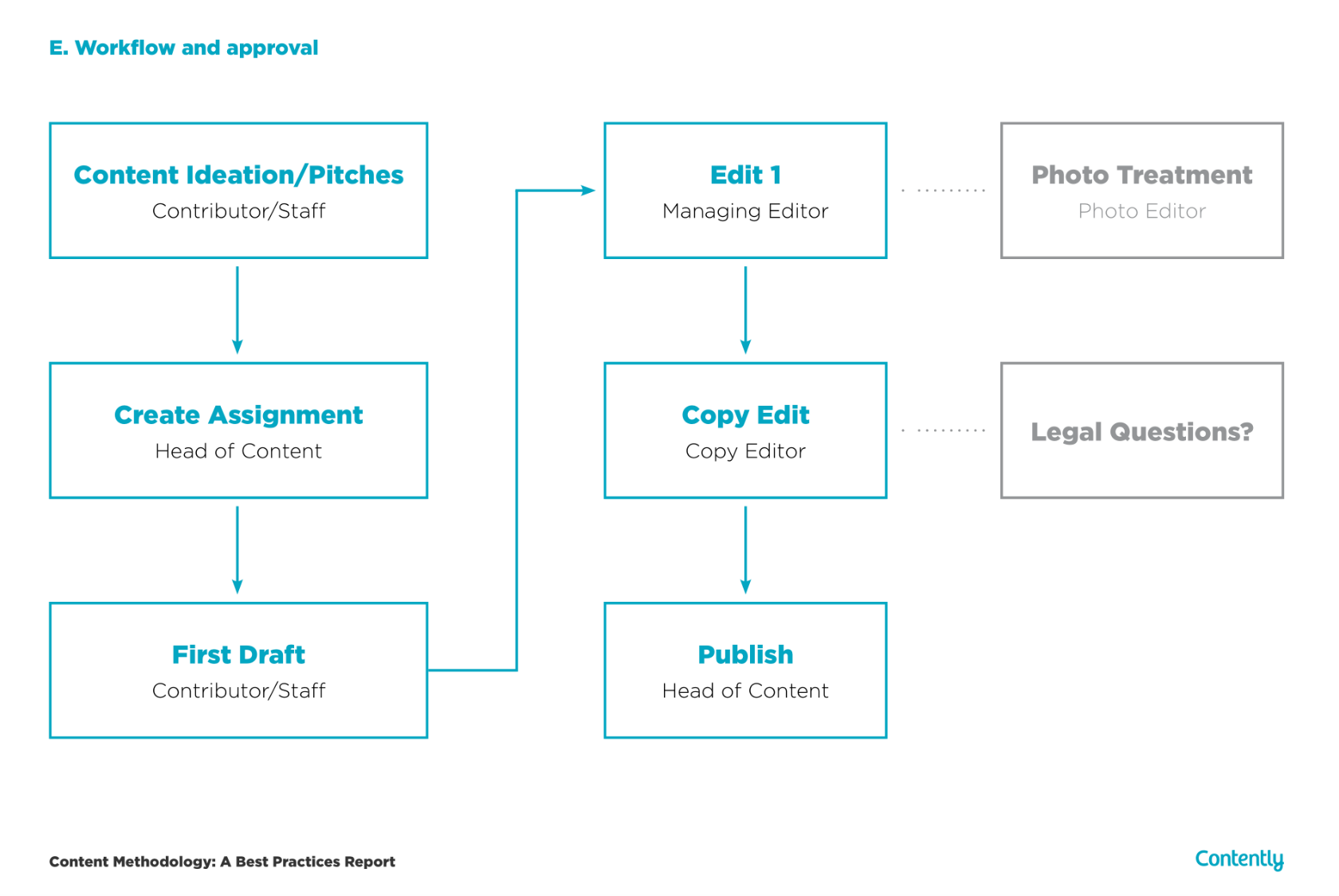Ask a Content Strategist
Ask a Content Strategist: How Do You Create Good Content in a Boring Industry?
Last week, we gathered 200 of the top minds in content marketing at the Bowery Hotel for the fith annual Contently Summit. In truth, I can’t believe that it’s been five years. When we held the first Contently Summit in the fall of 2012, Mitt Romney’s “47 percent” comment qualified as a debilitating political gaffe. “Call Me Maybe” was still lingering near the top the pop charts. No one was totally sure that content marketing would become a thing. And judging from Facebook, I appear to have been just 12 years old at the time.

Oh, how much has changed. Since then, I finally hit puberty. More importantly, the interest graph in content marketing took an upswing that’s only been matched by people Googling “American move to Canada or maybe France?”

As the content marketing industry has evolved, so has the sophistication of the questions people ask about it. People tweeted us dozens of questions during The Contently Summit, and we didn’t get a chance to answer them all on stage. So for this edition of “Ask a Content Guy,” I decided to answer the best ones.
advice on maintaining unique engaging voice while navigating bureaucracy and adhering to more rigid corporate brand rules? #contentlysummit
— dj (@djhalp) October 13, 2016
How should traditional/conservative industries try to introduce engaging, innovative and appealing content?? #contentlysummit
— Amy DeCicco (@ADMktg) October 13, 2016
These two questions go together since it’s really hard to create engaging content without an appealing brand voice. There’s a reason Siri doesn’t tell bedtime stories.
At Contently, we work with a lot of brands in conservative or technical industries, such as finance, insurance, healthcare, and B2B technology. In these industries, there are a few common misconceptions that can sabotage a content marketing program from the onset:
1. We conflate being dry and boring with being authoritative.
A lot of us learn a bad habit in high school and college, which is that if you want to write something authoritative, you have to be dry, pedantic, and just not very fun to read.
That’s insane. As a content marketer, you want to tell stories people actually enjoy. You don’t want to make it difficult for them to learn something from you, especially when the subject is technical or complex.
Just look at the publishers that do a really good job of making dense topics go viral. Vox is one of my favorites. It takes subjects that have the potential to be really difficult to understand and makes them accessible to the masses. For example, watch this explainer on the war in Syria, which uses colloquial narration and strong visual cues to break down the conflict. In the wrong hands, it would be incredibly dry and boring. In Vox’s hands, it’s been viewed over 3 million times and went viral on Facebook.
This doesn’t mean banks and insurance companies should start using “on fleek” and calling their audience “fam” in an attempt to mimic a millennial-friendly publisher. They should establish an intelligent, friendly voice that fits their brand. But they should also learn from the storytelling tactics that work for publishers like Vox, BuzzFeed News, and The New York Times.
Another favorite example of mine is Margot Robbie explaining mortgage-backed securities in The Big Short, which won last year’s Oscar for Best Adapted Screenplay. I know that a video of Margot Robbie in a bubble bath probably isn’t getting approved by most big banks. But it illustrates how to take a boring topic and explain it in a way that captures people’s attention and helps them learn something.
2. We don’t define our brand voice, and we don’t have anyone on the hook for maintaining it.
This simple step often gets skipped, but you should actually go through the trouble of defining your brand voice. Come to a consensus. Write it down. And then educate the rest of the company on what it is.
If you need help defining that voice, content strategist Melissa Lafsky wrote a helpful two-part guide on how to craft your brand voice. (Read it here and here.)
Finally, have someone on the hook for approving every piece of content that you publish. As I outlined in our content methodology report, your content workflow should look something like the diagram below. One person should be in charge of green-lighting each story and pressing publish when it’s ready to go live.

3. We don’t make the easy sell.
Case studies! Use them. There are are so many case studies of brands that think outside the box and create rich, engaging content in traditionally stuffy industries. Three of my favorites:
- GE Reports
- American Express OPEN Forum
- athenahealth
It’s way easier to get approval to take risks when you show that other people are already having success. Trust me, it works.
#contentlysummit top tips for energizing a small team already underwater with client work to dig into thought leadership content creation?
— Amanda Story (@Amanda_Story) October 13, 2016
To start, content needs to be a priority. If you put 17 client tasks on someone’s plate and then say, “If you can write that post about ROI for the blog, that’d be great too!,” the post for your blog will always be the thing that gets pushed off.
On the other hand, if you make writing a story one of the most important things someone on your team has to accomplish that week, then they’ll write it.
That’s easier said than done, but it helps to consider the hidden value of thought leadership content. “Thought leadership” is an overused—and often misused—term, but when it’s done right, you get a lot more out of it than a blog post. Sitting down to think critically about a problem and writing about the solution is an incredibly valuable exercise. I can’t tell you how many times we’ve written a thought leadership post about a content marketing topic and figured out how we could improve internally as a result.
Take, for instance, this post on the five rings of marketing ROI by Sam Slaughter, our vice president of content. This post inspired us to expand some of the metrics we tied to content, and it’s helped justify our investment in content to our execs.
If you want to energize your team, you also have to make sure that the audience reads what the employees write. That means having a strong content distribution strategy. See this “Ask a Content Guy” column for some tactics that’ll help you up your distro game.
#ContentlySummit what arguments would you use convince sales-focused execs to look @ audience growth & engagement metrics, not NMRR?
— Tai Nicolopoulos (@tainicolopoulos) October 13, 2016
I really hope that NMRR stands for “new monthly recurring revenue” and not something like “non-monetizing Russian roulette,” or else this answer is going to be really off.
Let’s be real, most CEOs and CFOs don’t care a ton about audience growth metrics. The key to effective content measurement is tying your metrics back to business goals that they do care about. In other words, your content objectives and content metrics should derive from your company’s larger business goals.

Another effective tactic is to explain the five rings of marketing ROI. Direct revenue from content is certainly an important ROI metric, but it’s just the center of the bull’s-eye.

We break down how to measure each ring here; I encourage you to check it out and reach out if you have any questions.
How (and how much) should quality storytellers think about content distribution & targeting? #contentlysummit
— Katie S. Sanders (@KatieSSanders) October 13, 2016
A lot—content creation and distribution shouldn’t be separate thought processes. From the moment you come up with a story idea, you should think about the platform you’re going to use and the audience you’re hoping to reach. When hiring your content team, make sure they understand that.
Otherwise, you’re going to end up posting a 30-minute video to Facebook of a pasty, washed-out financial advisor explaining mortgage-backed securities. You don’t have to watch The Big Short to know that no one wants to see that.
If you have a question for next month’s column, please submit it here. You can also tweet me @JoeLazauskas or send me a Snapchat of a puppy playing checkers. I’m pretty sure I’ll be able to figure out what you’re asking.
Image by Sam Edwards / GettyGet better at your job right now.
Read our monthly newsletter to master content marketing. It’s made for marketers, creators, and everyone in between.




